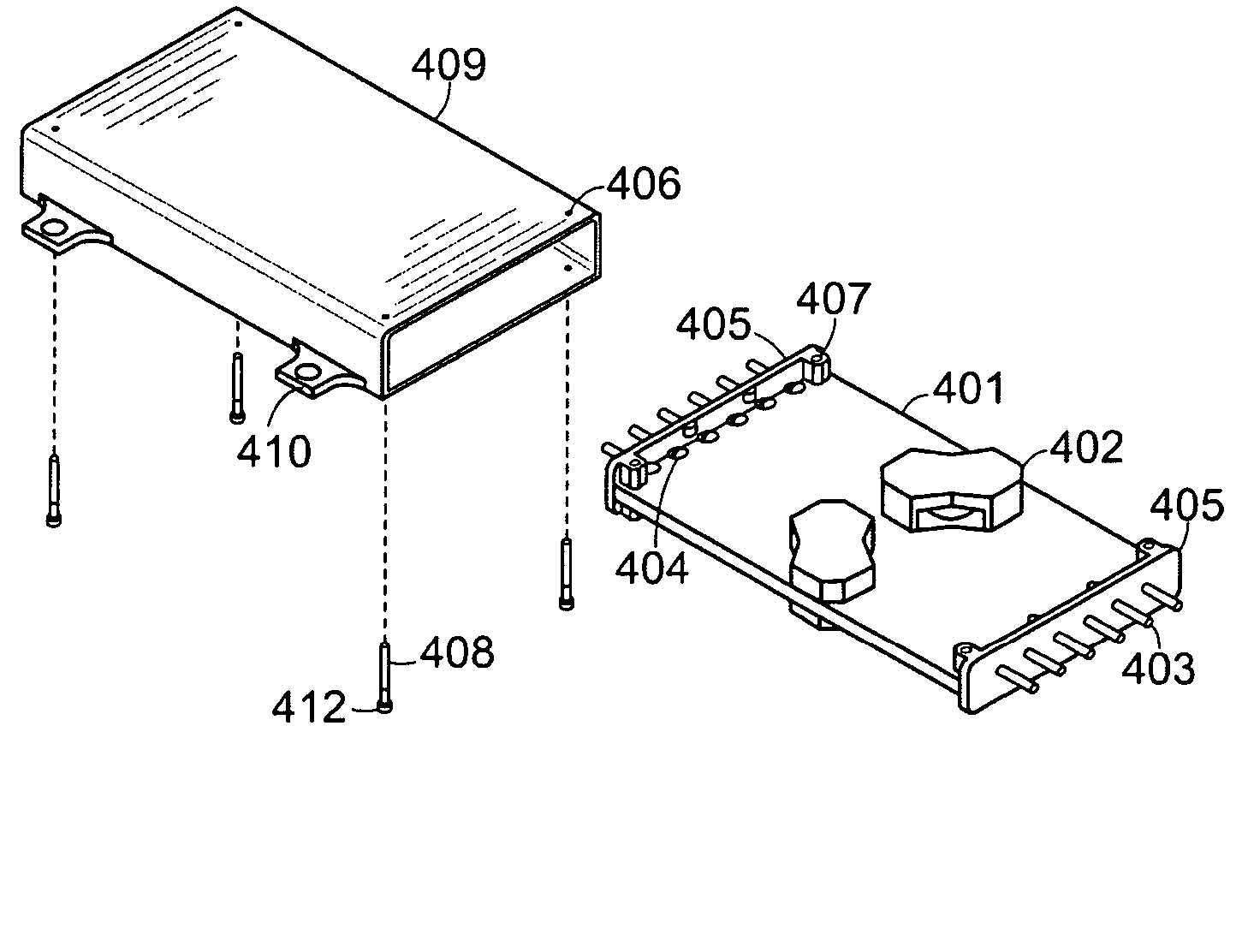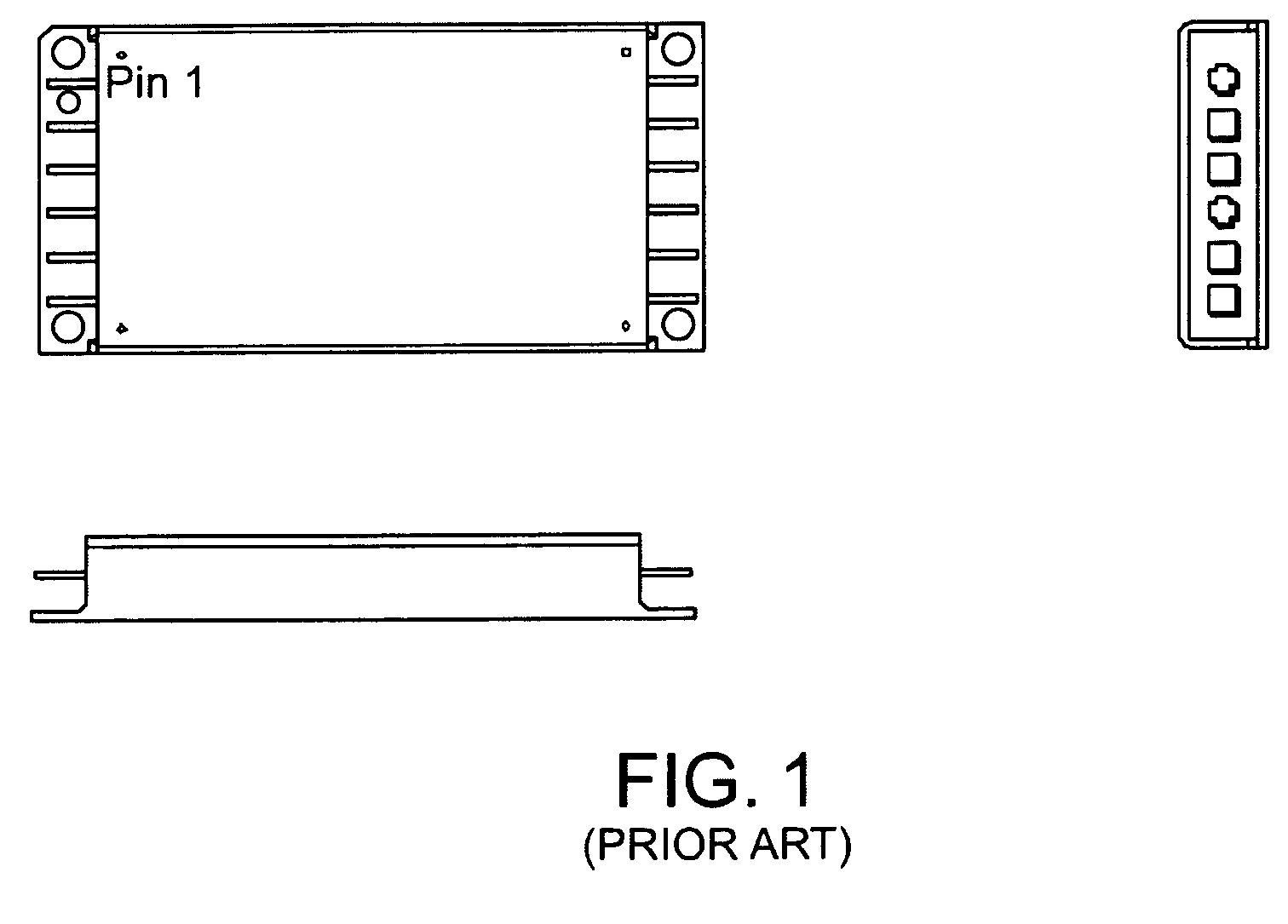Method for mechanical packaging of electronics
a mechanical packaging and electronics technology, applied in the direction of casings/cabinets/drawers, electrical apparatus construction details, casings/cabinets/drawers details, etc., can solve the problems of inferior electrical conductivity, high cost of thick film conductor production, and easy fracture of substrates, etc., to achieve improved electronic performance, cost effective
- Summary
- Abstract
- Description
- Claims
- Application Information
AI Technical Summary
Benefits of technology
Problems solved by technology
Method used
Image
Examples
Embodiment Construction
[0014]A description of preferred embodiments of the invention follows.
[0015]New methods for the design of a Hi-Rel mechanical package and the subsequent assembly of the circuit within it have been developed. The methods provide lower cost and are easier to produce using standard, high volume production methods and equipment.
[0016]FIG. 4 shows an exploded view of one embodiment of the new construction / assembly. The basic principles of this method are as follows.
[0017]The substrate is made from a printed circuit board 401 (PCB) fabricated from layers of fiberglass and copper foil. PCB assemblies are inherently more mechanically robust than ceramic substrate assemblies. The PCB enables the use of pure metal, multiple layers (8-12 typical), and metal thicknesses up to 6 times those of typical thick film conductions. The conductor layers are made from copper foil, and provide higher conductivity resulting in significantly lower interconnection resistance and a resulting increase in effic...
PUM
| Property | Measurement | Unit |
|---|---|---|
| thermally conductive | aaaaa | aaaaa |
| thermal conduction | aaaaa | aaaaa |
| electrical isolation | aaaaa | aaaaa |
Abstract
Description
Claims
Application Information
 Login to View More
Login to View More - R&D
- Intellectual Property
- Life Sciences
- Materials
- Tech Scout
- Unparalleled Data Quality
- Higher Quality Content
- 60% Fewer Hallucinations
Browse by: Latest US Patents, China's latest patents, Technical Efficacy Thesaurus, Application Domain, Technology Topic, Popular Technical Reports.
© 2025 PatSnap. All rights reserved.Legal|Privacy policy|Modern Slavery Act Transparency Statement|Sitemap|About US| Contact US: help@patsnap.com



